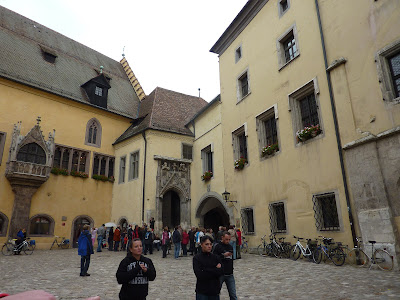Soldier painting is progressing quite well - I'm keeping the sessions down to a couple of hours, since my eyes get tired, but I'm happy to be getting back to it. I have a couple of units close to being finished, and that will be an important step psychologically, apart from anything else; if I have a problem with a painting job, or if it gets stuck, this has always discouraged me out of all proportion to the seriousness of the issue. Energy sapping! This week should help a lot, in a number of ways.
I've also had a chance to get back to testing my solo campaign rules for Corporal John, which are coming along very well.
Last month I got as far as the first tabletop battle in a fictional campaign. this was the action at La Bienveillance that I featured in a post at the time. I'm pleased that the Jolly Broom Man has been able to provide some very useful help and support via Zoom. To restate an idea about which I have become convinced, I believe that it is impossible to test anything original on one's own. Even if it is a solo game, we will always read the rules as though they say what we meant them to say, so the testing is invalid right from the start.
The bold JBM appeared last night, complete with a very intimidating set of whiskers, and we advanced the campaign a little without too much effort, and with no real problems.
We managed to start a background siege running, for the first time. It didn't last very long. The French laid siege to the small town of Rijnsburg, sending the siege train and the divisions of Lützelburg (Bavarian) and Bassinet (French). Rijnsburg was selected, not least, because of the mediochre reputation of the Dutch commander, Colonel Wiegman, and the result was the quickest collapse we have seen yet in a test siege. The investment was only 3 weeks into the job when something bad happened to the garrison - Wiegman asked to surrender, unconditionally, and the remains of the garrison and poor Wiegman were sent off to the hulks. The French now hold Rijnsburg, and obtained 2 Campaign Points for very little effort. They will have the job of repairing about 30% damage to the fortress.
We also got to the initiation of the next field action, which will be a biggish set-piece in the open country outside the town of Waremme, in Wallonia. The French will be attacking, and the Order of Battle will be:
I have to send some choices of battlefield terrain to JBM, and we can have a crack at it when opportunity allows. I also have to remind myself where to position the Zoom cameras for the extended version of my table - it should be OK, since I have done it before [hands up if you are convinced].













